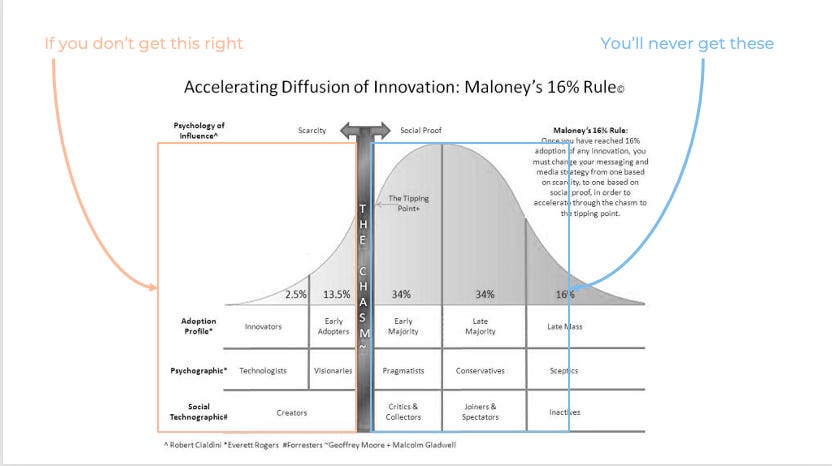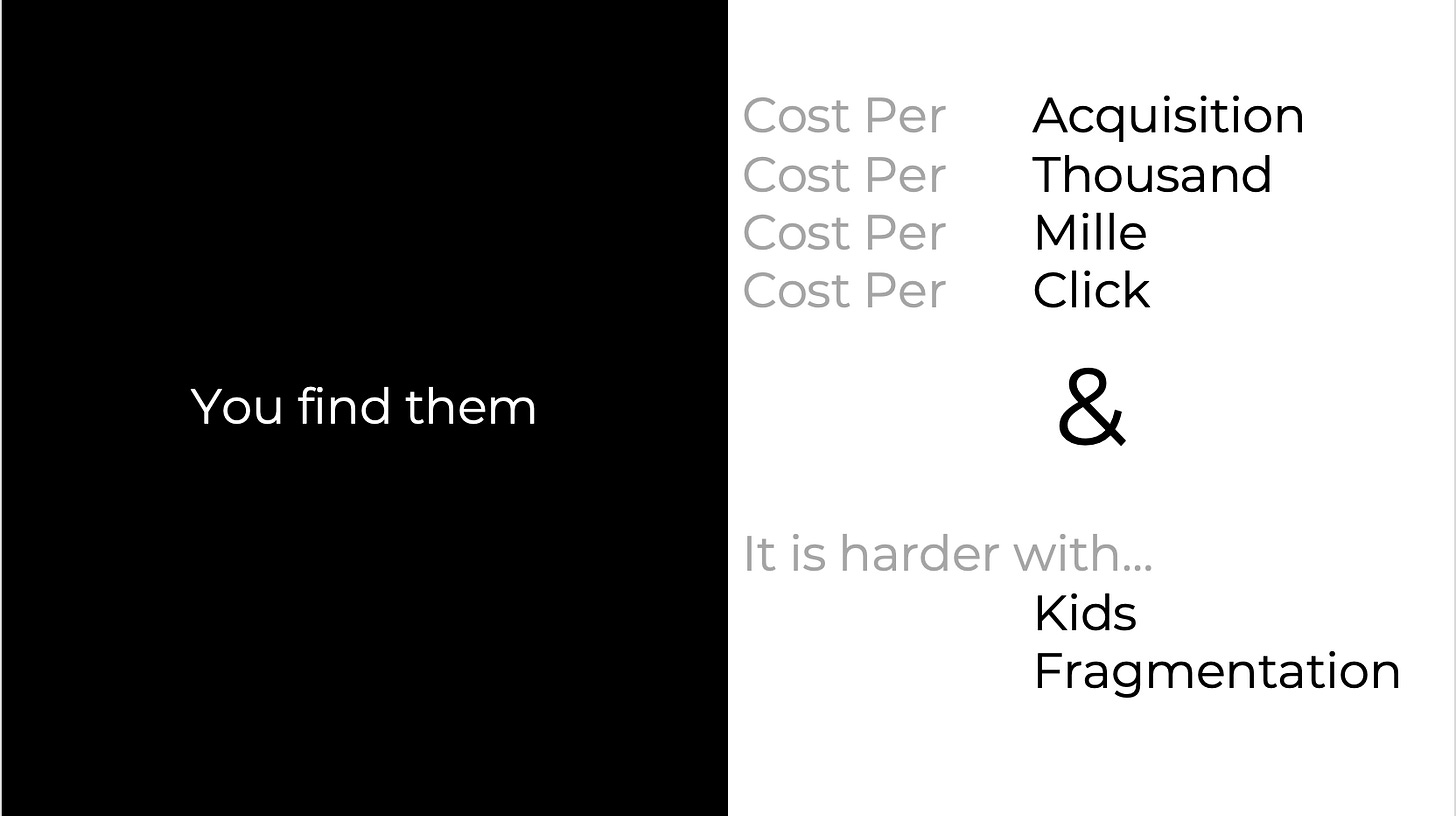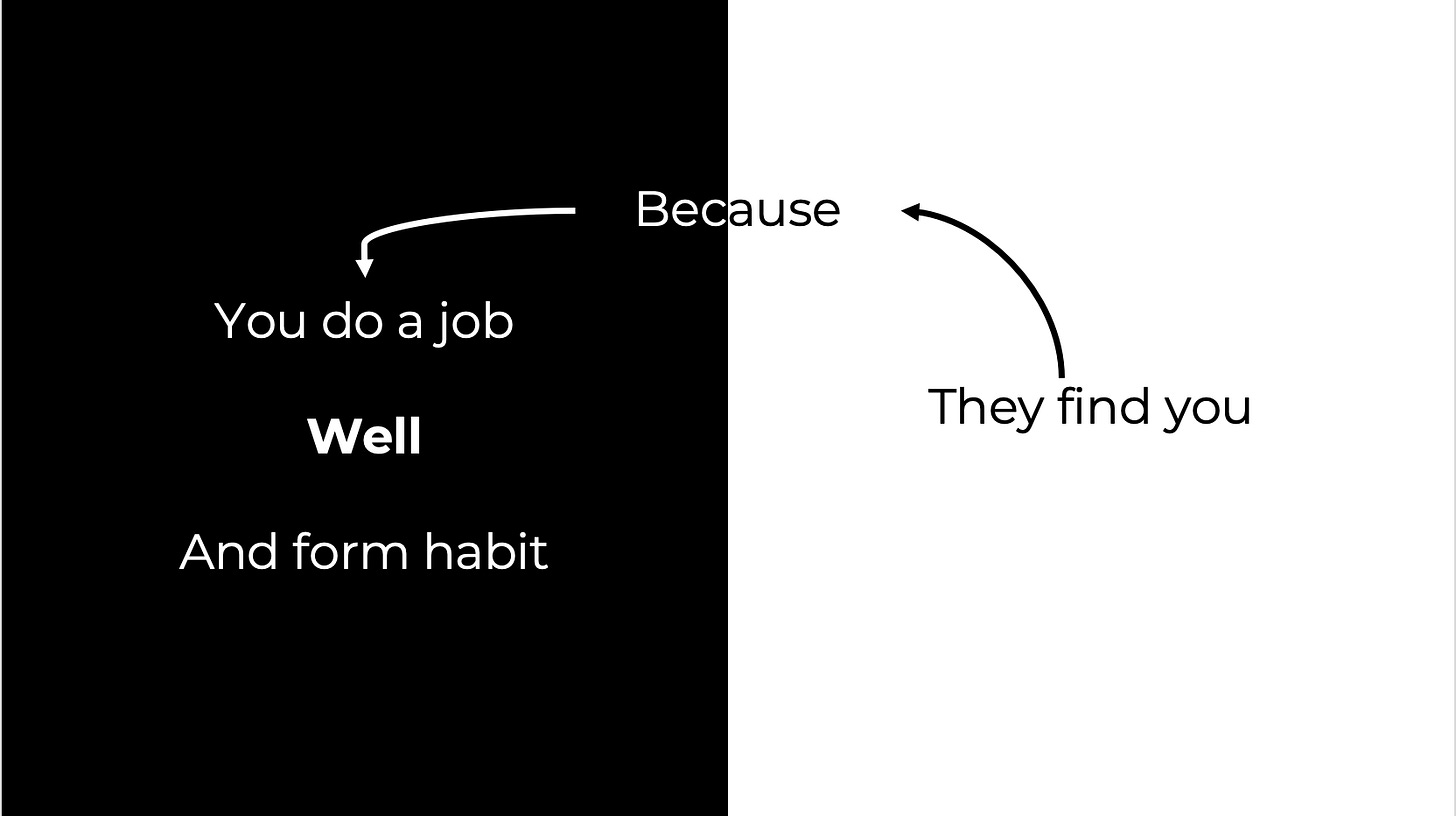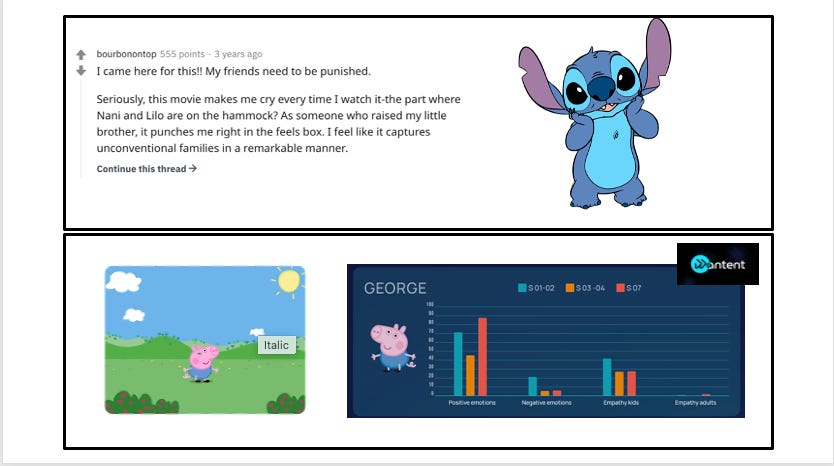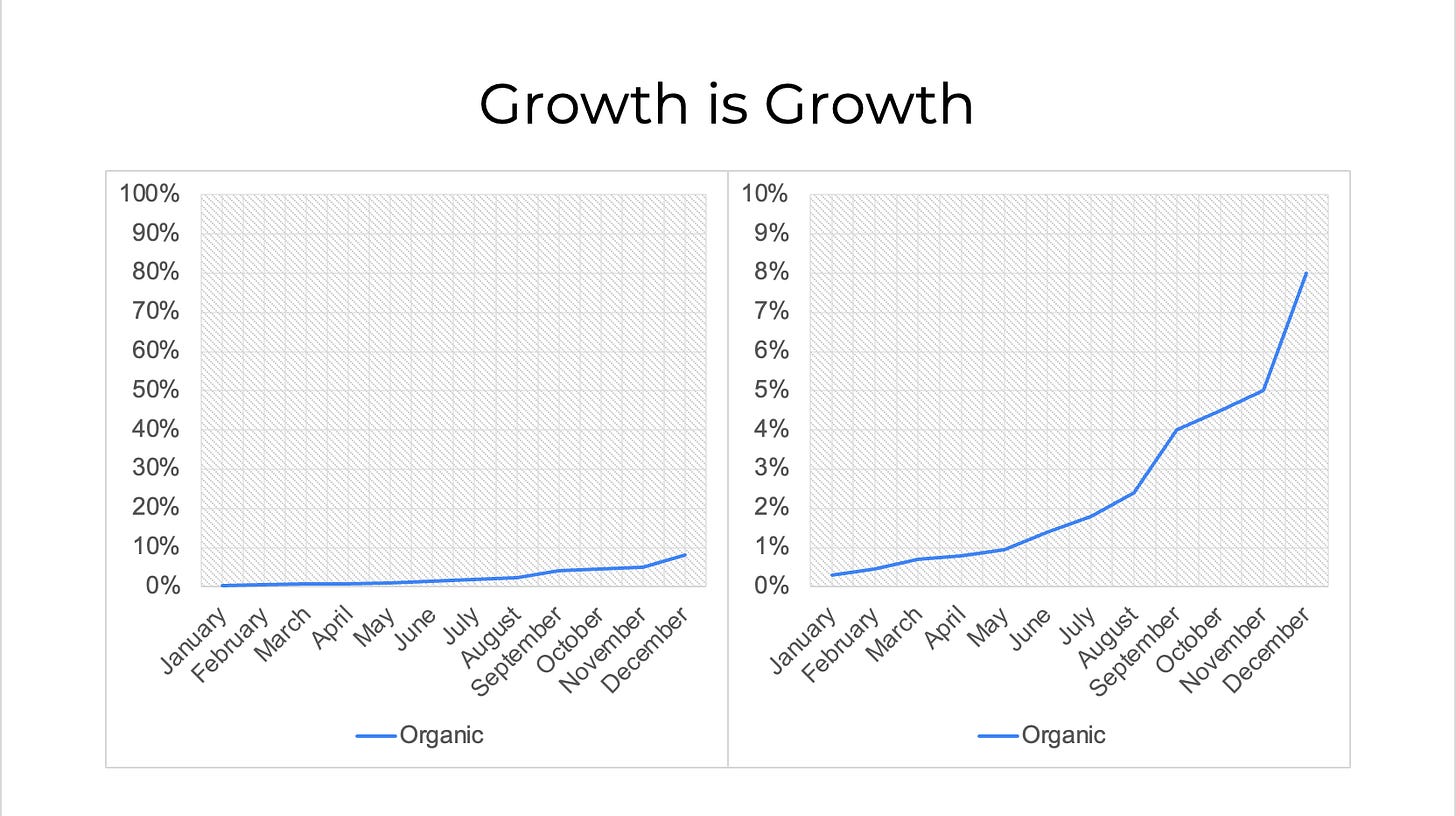Moving from Adoption to Momentum
This is the second of three posts on launching and growing brands—whether in content, products, or beyond. If the first stage of success is Adoption, the second is Growth—turning early traction into sustained momentum.
But without losing sight of the core product appeal.
What Growth Means in the Lifecycle of a Brand
Once you've found and engaged your early adopters, the challenge shifts: How do you reach the next wave of users efficiently? Growth isn’t just about blasting content to as many people as possible—it’s about ensuring that new users come in organically, at a lower cost, and with the same enthusiasm as the first 16%.
By adopting the right first users, they will express the correct way to 'use’ you, which removes onboarding friction.
And at this stage we have two strategies for growth. Paid and Organic. These terms may change depending on the platform of consumption. But the rule stays the same. One is the content finding the audience, and the other is the audience finding the content.
Ok, you may also need paid views also, it evidences growth. BUT, to make lasting success, you need your audience to want to find you.
Growth happens when a brand moves beyond needing to ‘find’ an audience—when the audience starts finding the brand. It’s the shift from outbound efforts (ads, promotions, direct engagement) to inbound interest (search traffic, word-of-mouth, social discovery). Brands that master this stage build a self-sustaining engine of engagement and visibility.
And if you are a content owner I’d strongly recommend you figure out the job you do for your audience. I run 1/2 - 3 day summits using different boards. But we always look at the late Professor Clayton Christensen and Professor Theodore Levitt work around Jobs to be done.
“People buy products and services to get a job done”
Professor Clayton Christensen
This is a great article to read on how to apply it.
For example: Cocomelon
When: In the morning, when parents are trying to get multiple children ready for school whilst multi-tasking their own needs
I want to: Not worry about my kids for 15 minutes. They need to be quiet and still
So I can: Answer an important email OR Have a shower
And there will be more than one problem you are trying to solve. And you can prioritise which ones to focus on. This will not only impact your content choices, but your marketing campaigns, taglines and triggers and SEO.
This is a great template for prioritising the problem you want to solve. You look at how many of the audience you think it will influence from few to many. And then you calculate the importance from low to high.
I would argue, at least early in the growth stage, that you focus on the high importance, lower audience size. If we can craft a ‘job’ that is highly targeted it may well become your unique proposition from which to grow. It also allows you to build community and get feedback.
And the reason we are so hard focussed on doing a job is so that we can use it to leverage organic audience behaviours. It allows us to…
The Three Pillars of Organic Growth
Strategic Scheduling & Discoverability
Algorithms help, but human-led scheduling matters—aligning content with when audiences need it most.
Example: Episodes can be strategically scheduled around morning and evening routines, reinforcing habitual viewing. Or even life stages e.g. resolving conflict, learning to brush your teeth.
How to optimise: Blend algorithm-driven recommendations with manual scheduling that fits audience needs (e.g., bedtime, weekends, after school).
Community Amplification
Are audiences sharing and discussing your content naturally?
Example: Lilo & Stitch became a cultural touchstone not just for kids, but for families who connected with its themes of unconventional love and belonging. Its emotional depth sparked discussions, memes, and long-term fandom engagement.
How to optimize: Lean into emotional resonance, create content that invites discussion, and provide fans with ways to express their connection.
Habit Formation & Retention
Is your content part of a regular viewing routine?
Example: Cocomelon’s predictable structure and episode length encourage repeat watching.
How to optimize: Use consistent release schedules, episodic hooks, and themes that fit into family viewing habits.
Measuring Growth: Key Metrics
To understand if your brand is growing organically, track:
Organic search traffic: How many viewers/users are finding you without paid efforts?
Repeat engagement: Are viewers coming back, and how often?
Cross-platform movement: Are fans following you across different spaces?
Word-of-mouth velocity: How frequently is your brand being mentioned and shared?
In the early stages the focus shouldn’t be on the absolute number e.g. 0.8% of your traffic being organic may sound low. But if its grown from 0.4% in two months, thats 100% growth.
Growth Is an Ecosystem, Not a Push
The best growth strategies don’t feel like marketing—they feel like discovery. Whether through UGC, social buzz, or search traffic, the most successful brands position themselves as something that does a job so well, audiences want to share.
Organic growth isn’t about forcing attention—it’s about making sure your audience finds value in spreading the message for you.
Next post? We tackle Fandom—how to turn passive audiences into lifelong advocates.


